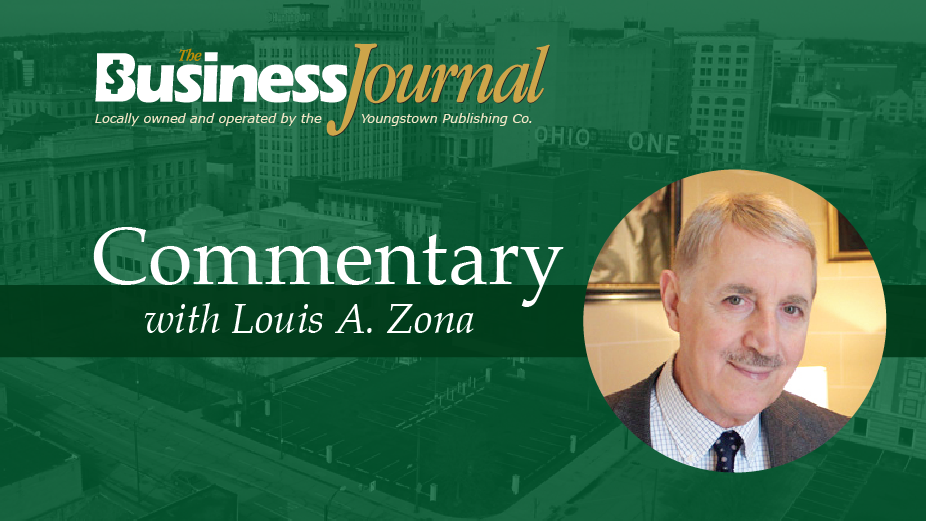Wampum: Small Town with a Big Reach
WAMPUM, Pa. – Jonathan Landell leans forward under bright lamps that illuminate his narrow workshop along Main Street in the borough of Wampum, Pa.
You’ve likely never heard of him, or his business. However, Landell, the proprietor of Landell Flutes LLC, is renowned in classical music circles and his work is sought by some of the most prominent orchestras around the world. “Most of the big orchestras know me and my work,” he says.
Landell manufactures flutes by hand, one of just 10 such independent craftsmen he knows of who are left in the world. From start to finish, metallic flutes are the work of a single person – a “One Man, One Flute” operation – as his business card reads. Indeed, in a global economy dependent upon mass production, Landell’s work is an anomaly.
Landell began his business in 1971, after serving an apprenticeship at the Powell Flute Co. in Boston. At the time, he was also enrolled in the New England Conservatory but his work at Powell Flute led him to an entirely new career and direction. “I thought it would be so cool to make flutes. So they took me on,” he recalls. “After a few years, I started my own shop.”
He and his wife relocated to Vermont, where for 25 years he ran the business from their home, earning a reputation as a master craftsman who fashioned the instrument for some of the great soloists.
So, how does a world-renown flute maker find his way to Wampum, a town of fewer than 600 people?
“It’s beautiful here,” Landell says. “I’m a country guy.” The cost of living in Vermont grew to be unbearable. So in 2022 he and his wife moved to Wampum to be closer to their daughter, who graduated from Geneva College in Beaver Falls.
“Quite a few different things led me to Wampum,” he says.
Wampum’s Origin Story
Wampum’s Main Street is anchored on its northern end by the L. Butler Hennon Recreational Center and to the south by the restored Wampum Station, once a stop on the former Pittsburgh & Lake Erie Railroad. Established in 1796 along the Beaver River, it is the oldest borough in Lawrence County. Along the Main Street thoroughfare is a general store, The Wampum Coffee Co. – a new coffee shop – some buildings under restoration, a funeral home and pockets of residential homes.
The name of the community, “Wampum,” is derived from the Native American “wampumpeag,” an Algonquian term that described beads of white and dark purple fashioned into ornate belts. Often, the term is mischaracterized as a form of currency, when initially Native American peoples used it as a means of diplomacy, communication and political recognition. European settlers in 17th century New England, however, began accepting the beaded belts as legal tender.
This section of western Pennsylvania along the Beaver River was populated by dozens of Native American communities during the mid-18th century, some playing pivotal roles as France and Great Britain fought for control of the Ohio Valley. In the aftermath of the French and Indian War, as it was known in the Americas, White missionaries from the east found it their cause to convert some of these Native Americans to Christianity.
One such community was a Moravian settlement of Delaware Indians led by the missionary the Rev. David Zeisberger to a site just north of present-day Wampum along the Beaver.

A historical marker along state Route 18 identifies the site of Friedensstadt, also known as “Langundowi,” or “place of peace” established in 1770. Zeisberger, a missionary born in what is today the Czech Republic, pursued with a particular zeal an effort to introduce Christianity to local tribes. He did so by first acclimating himself to Native American culture and learning to speak their language. Joining Zeisberger was the Rev. John Heckewelder, who would later write a narrative of his life with the Moravian communities.
“On the arrival of these Christian Indians, the neighboring Indians were astonished to see people of their nation, differing so much in their manners and behavior for [sic] themselves, and to hear a doctrine preached, they never before had heard,” Heckewelder wrote of his first encounter with local tribes along the Beaver.
According to Heckewelder, several important members of the Delawares defected to the Christian settlement, prompting an explanation of their departure to tribal chief Pakanko. The moment could also serve as a possible inspiration for the small borough’s name today. “A black belt of wampum … was laid before the chief, containing the following advice and notice …” The message of the wampum belt contended that disease had for years ravaged the Delawares and many in the tribe placed the blame on witchcraft or other supernatural forces. “Some of the counselors were of the opinion, that by embracing Christianity, the contagion would ease,” Heckewelder wrote
However, other nearby tribes were unconvinced. Both Zeisberger and Heckewelder would leave the village for weeks, exploring other opportunities to develop new Moravian settlements. In their absence, these tribes grew hostile, which culminated in the murder of a missionary at Friedensstadt. “It became the wish of the inhabitants of the place to leave this settlement entirely and join their congregations on the Muskingum. Accordingly, on the 13th of April, 1773, this handsome village was evacuated,” Heckewelder wrote.
The Moravian village was abandoned and its people removed to settlements on the Muskingum River in present-day Ohio, where for some, their fate was sealed.
Nine years later, on March 8, 1782, a contingent of Pennsylvania militia under the command of Daniel Williamson broached the small, neutral Moravian village of Gnadenhutten, where some exiles of Friedensstadt now lived along the Muskingum.

The major military campaigns of the American War for Independence had all but ended. But conflicts in the frontier remained very active. Believing the village had harbored support for nearby warrior bands, a decision was made to herd 90 villagers of mostly women, children and older men (younger male members of the village would have been on hunting excursions) into two smoke houses. Militiamen bound the villagers’ hands behind their backs. Then, one by one, members of the militia crushed the skulls of all 90 innocent Moravians with cooper mallets.
Wampum’s connection to its Native American past remains alive today, says Jim Ferrante, owner of Ferrante Upholstering & Carpeting and a member of the borough’s council. In his office, an ornate wampum belt that a Native American chief gave his father is displayed prominently. Ferrante has worked to preserve the community’s history. Several years ago, he chaired the 225 Commission, formed to help chronicle the borough’s history from the first European settlers to the present day. The result was “Wampum: 225 Years in Retrospect,” published in 2021, edited by Mark Barnes.
“My father did a similar one 30 years ago and my grandfather did one 60 years ago,” Ferrante says. The family has been a part of the Wampum community since approximately 1887; the business was established in 1902.
Coal, Limestone, Favorite Sons
The first White landowners in Wampum were John and Robert Davidson, Irish immigrants who arrived in America in 1791 and eventually purchased 200 acres in 1796 where Wampum stands today. That same year, their mother and four brothers joined them. Another brother arrived later.
The family would procure extensive landholdings. Robert constructed the first gristmill in the borough in 1830, which he operated until his death 16 years later.
By 1856, the first blast furnace was erected by Porter R. Friend & Co. of Pittsburgh, according to the “History of Lawrence County Pennsylvania, 1770-1877,” by S.W. and P.A. Durant. While that venture failed, new investors under the Wampum Furnace Co. were able to turn the company around so that by 1871, the furnace produced 7,000 tons of iron per year. The company also operated and owned an extensive network of coal mines and limestone quarries. “In busy times, they employ over 200 men,” the account reads.
Key to development of the region was mining and transportation, with direct railroad lines leading into New Castle and Pittsburgh. By the late 1880s, Wampum had emerged as a small, but bustling, commercial center.
There were also triumphs during the 20th century as the community achieved several milestones. The 1955 Wampum High School Indians men’s basketball team won the state championship, a feat reminiscent of the film “Hoosiers,” in which a small-town Indiana team takes the honors in Indianapolis.

Even more extraordinary is that Wampum won the title twice more, in 1959 and again in 1960. All these teams were coached under the legendary L. Butler Hennon, who is memorialized by a large plaque outside the recreation center of the town.
Among the players during those years was Dick Allen, a naturally gifted athlete who excelled in several sports. He went on to distinguish himself in Major League Baseball – winning the National League Rookie of the Year with the Phillies in 1964. In 1966, Allen was among the three best home run leaders in the league, along with Hank Aaron and Willie Mays.
Allen’s professional baseball career lasted 15 years, with the Phillies, St. Louis Cardinals, Los Angeles Dodgers and Chicago White Sox, where in 1972 he won the American League MVP.
His last season – this time in 1977 with the Oakland A’s – though, was probably most poignant. When the team manager asked Allen what number he wanted on his jersey, he replied, “Sixty. For Wampum High School, Class of 1960.”
There was also one last request. Instead of his last name stitched on the back of his uniform, Allen suggested another – The name he chose? Wampum.
Pictured at top: Jonathan Landell, owner of Landell Flutes LLC, moved to Wampum in 2022.
Copyright 2024 The Business Journal, Youngstown, Ohio.




